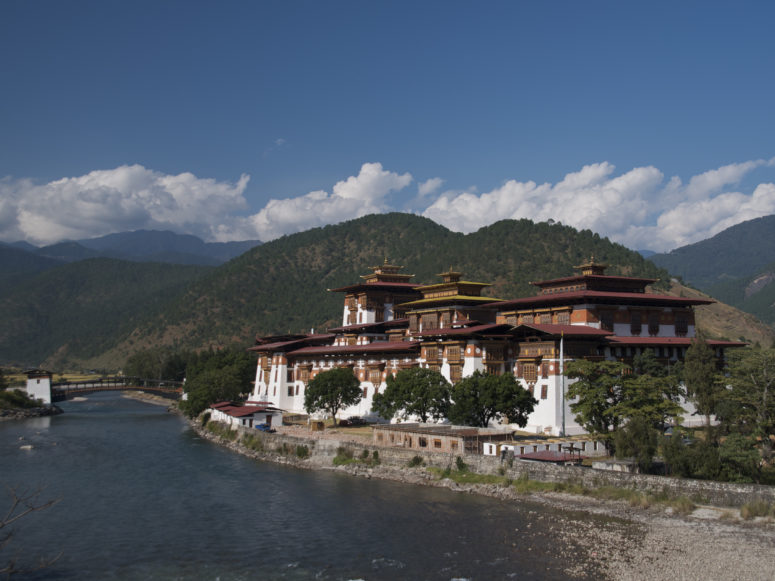Laura Blake is an architect with an independent practice in San Francisco. She has degrees in art history and architecture and was the writer and photographer for a recent book entitled Bhutan’s Buddhist Architecture. In addition to being an easy-to-use guide to the architecture of Bhutan, the book is also a pictorial glossary of Buddhist symbols used to decorate the buildings. I asked Laura about the book.
Q: How did you get interested in Tibetan architecture?
A: I became interested in Tibetan Buddhism and Tibetan Buddhist architecture when I did a trek in 2010 to Lo Manthang, an ancient Buddhist city-state in Nepal. I loved the terrain, people, and architecture and wanted to see more, so I did a trek in Bhutan the following year.

Tango Monastery
Q: Do you have an interest in Buddhism?
A: While not a Buddhist, I am interested by Buddhist philosophy, especially the vein taught in the Himalayas that aims to bring about not just individual enlightenment, but enlightenment of all sentient beings. There is something quite special about that selflessness that I have experienced in the kindness and hospitality of laypeople and monks.
Q: Tell us about one of your many visits.
A: On my last visit to Tango Goemba, I was initially disappointed to find it under renovation. However, the building was decorated with colorful banners, and there was a buzz of activity. As we watched, a monk named Karma came and greeted us. He explained it was the monks’ graduation day and invited us in for tea and the ceremony. What a treat to watch the monks’ families arriving, the monks serving tea, and the graduation ceremony, which was about their new scholarly text rather than the graduates. At the end of the ceremony, several monks pulled iPads from their robes to photograph the presentation of their work. The combination of ancient tradition, a simple life, and technology was surprising and yet so real. Karma was planning to undertake a retreat that would last three years, three months, and three days. I often wonder what he will do once he completes his retreat.

Tango University Graduation
Q: How many times did you go?
A: I’ve been to Bhutan four times: twice to go trekking and twice while working on the book.
Q: What kind of camera did you use?
A: I took all the photos in Bhutan using a Canon point-and-shoot and Nikon DSLR.

Punakha Dzong
Q: Did you take all the photos? They are beautiful.
A: I did not take some of the images of Tibetan and Indian precedents on page 13, but otherwise, yes.
Q: What did you learn about architecture from these trips? How did this research and documentation change your own approach to architecture?
A: Of course Buddhism and architecture are interrelated. Buddhists believe that life and death is a continuum. Similarly, while Bhutanese architecture is often stunning, the sites, rather than the buildings, are sacred. Thus the structures are regularly renovated and rebuilt. Both new and old structures are beautifully crafted and have wonderful courtyards, terraces, and interior spaces that add up to a wonderful sense of place. The new work follows traditional practices with some adaptation. The result is architecture that is traditional yet vibrant. My experience visiting Bhutan and working on this book reminded me that while a stunning building captures one’s eye, a well-designed building that adds to a sense of place makes you return again and again.

Freshly printed prayer flags drying in the courtyard of Trongsa Dzong
Q: Are you working on another book?
A: I am interested in the idea of a book about the Buddhist architecture of the region. In fact, while trekking earlier this summer in Ladakh, I found myself studying the buildings and sketching the floor plans. I’m also interested in the range of ways that Buddhist symbols are depicted in Bhutan—there is something quite wonderful about the simple versions painted by locals in some of the more remote areas.
For more information: www.laurablakearchitect.com
